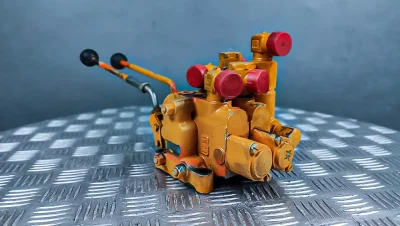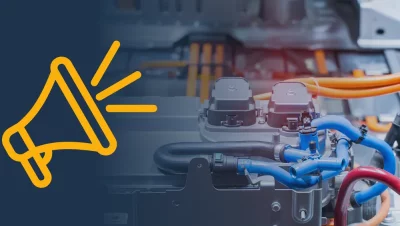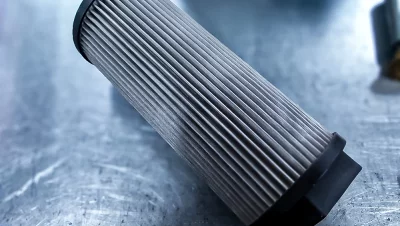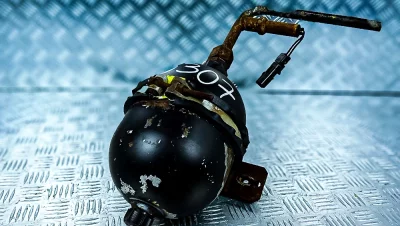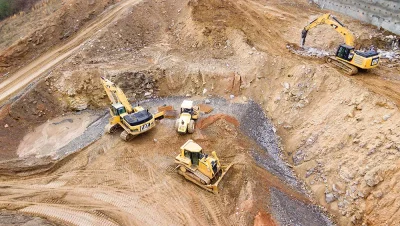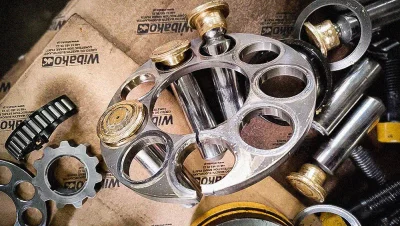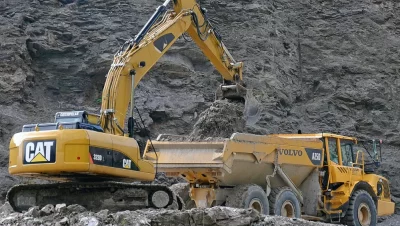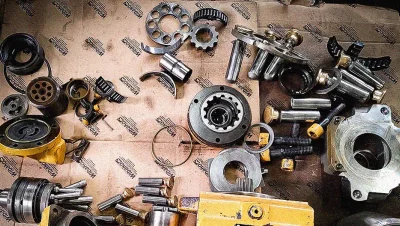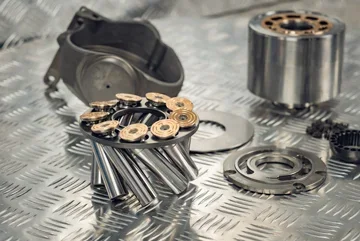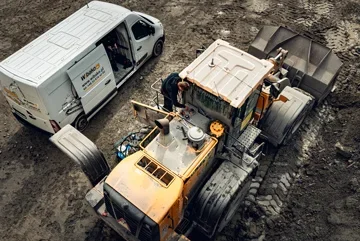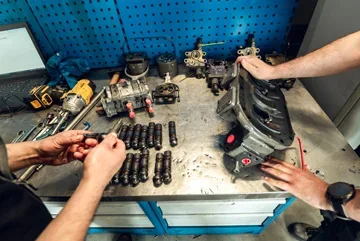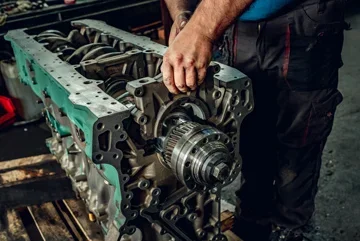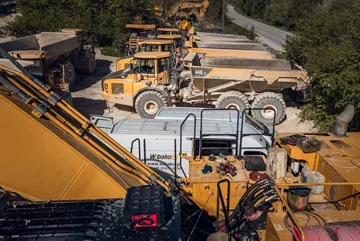Liebherr D926 engines are a true classic for many mechanics and construction machine operators.
The six-cylinder inline engine, which is used in loaders, bulldozers, excavators, and mobile cranes, still enjoys immense popularity. In this article, we will take a closer look at the D926 design, its strengths, typical failures, and the differences between versions.
What distinguishes the Liebherr D926?
The D926 engine is based on a classic block with wet liners, which ensures easier regeneration and better cooling. In the video, we can see its construction step by step – from the bare block, through the assembly of the crankshaft, pistons, to a complete, regenerated engine ready for work.
The engine was available in both versions with mechanical fuel injection pumps and in newer variants with electronic control. The power range – from about 150 HP to nearly 400 HP – allowed for versatile applications.
Most common failures of the Liebherr D926
- Water in the oil – caused by worn-out liner O-rings
One of the most common problems with this engine is the coolant leaking into the oil. The cause is the O-rings of the cylinder liners, which lose their tightness over time. Symptoms? The so-called "butter" under the oil filler cap or on the dipstick.
Solution: Replacing the O-rings and thorough regeneration of the liners. Attempts to seal with sealing compounds often end in serious failures.
- Differences between versions – a trap for the unaware
Not all D926 engines are the same! Crane versions differ in shafts and pistons from those used in excavators or bulldozers. The differences also include piston cooling and bolt diameters.
Tip: Never buy an engine "by eye" – consulting a specialist can prevent costly mistakes.
Advantages of the Liebherr D926 engine
- Simple but robust design – especially in versions with mechanical fuel injection.
- Bulletproof oil pumps – mounted at the front, usually trouble-free throughout the entire service life.
- Diversity of versions and power – from light applications to heavy-duty crane machines.
- Ease of servicing – availability of parts and the possibility of complete regeneration.
Attention to details – i.e., design differences
Older versions (D916, D906) differed not only in piston diameter (115–122 mm) but also in the design of the timing system. In the new D926 versions, smaller water pumps integrated with the timing cover were used. There are also variants without an intercooler – especially in bulldozers.
Summary
The Liebherr D926 is an engine that, despite the passage of years, still finds recognition due to its simplicity, durability, and versatility. Like any unit – it has its issues, but with the right knowledge, they can be effectively mitigated. However, it is crucial to accurately identify the engine version before purchasing or overhauling it.
The entire video can be seen here.



